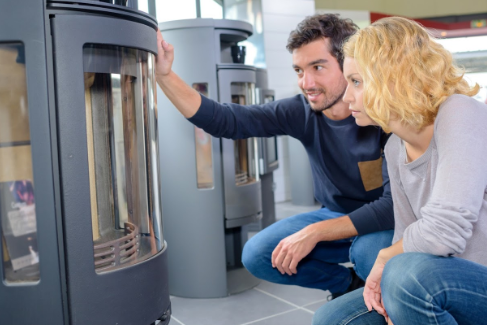The new year is usually a time to reflect on the year that has passed and make goals for the future. With the start of 2020, however, you can also reflect on the past decade — including how the time has affected your HVAC system.
Improvements to heating systems are made constantly, and as your furnace ages, it becomes less efficient. Some furnaces, while still in good working order, simply don’t measure up to systems currently on the market.
Learn more about the features of newer gas heating systems to see if your house might need an improvement to start the new decade off right.
Using Less Energy
The definition of what makes an efficient furnace has shifted as technology has improved. It used to be that a furnace with a 78% fuel efficiency was an excellent investment, even though that meant that 30% of the fuel was wasted instead of used to heat your home.
Now, furnaces are more efficient than ever, with the best models utilizing over 98.5% percent of the fuel they burn. You’ll get more heat from less fuel, which translates into significant savings over time.
Harnessing the Heat
Heat loss can occur in many areas of a furnace, resulting in lower energy efficiency. One of those areas is the heat exchanger. Older furnaces have only one heat exchanger. After burning fuel, the warmed air is pumped into your home, while the exhaust is pumped outside.
With only one heat exchanger, a lot of heat leaves the house with the exhausted fuel. In a new furnace, the still-warm exhaust can be processed again, pulling even more heat into your house before releasing the exhaust. You’re getting more from what you’re burning, which translates into getting more bang for your buck.
Working Smarter
Does your old furnace still use a pilot light to keep the heat running? The pilot light constantly burns, but it is only actually useful when the furnace switches on. The rest of the time, the constant flame wastes fuel by staying lit.
More modern furnace designs offer pilot light alternatives, including an electric igniter that helps a gas furnace burn fuel only when needed.
Spreading Heat Evenly
Does your home seem to vary in temperature throughout the day instead of staying at a constant comfort level? The varying temperature can be caused by a single-speed blower, a hallmark of older heating systems. When the furnace is on, it uses a fan to distribute heat through the ductwork.
A single-speed fan will blow the heat through the home effectively, but then it shuts off, and the air stops moving entirely until the house cools down and triggers the furnace to start burning more fuel.
Newer heating systems have a more intelligent approach. The blower can work at higher speeds but then continue to move air at a slower speed to help circulate residual heat and keep air moving through the house. Blowing the heat through the home at a reduced speed for a longer time also prevents the wear and tear of frequent stopping and starting.
The result is a more even temperature and fewer freeze-thaw cycles, which decreases the overall load on your furnace over time.
Choosing the Right Fuel
Gone are the days when you have to choose between many different heat sources and types. Each type of system has pros and cons. Modern technology takes the good things from different system types and puts them together into a hybrid system where you can enjoy all of the pros with fewer cons.
For example, a hybrid furnace can adjust which energy source it uses based on what is more efficient. A gas or heat pump hybrid might use a heat pump for temperatures that are more mild, but still chilly, but during a cold snap, the furnace can switch to using gas or propane as a fuel source for more dependable heating in cold weather.
This way, you don’t have to put up with the cons of a heat pump (less dependable in very cold weather), but you also don’t have to worry about inefficiently burning and paying for fuel when a different heat source could do the job more easily.
Entering a New Era of Furnace
Finally, just like everything else, your HVAC is going smart. Wireless connectivity and smart thermostats make it easier to control your heating system away from home.
You can reap the benefits of reduced furnace use by setting the temperature to go colder at night, checking for times when the furnace seems to be on more often (indicating the need for service or repair), and checking the state of the appliance when you are on vacation.
Communicating home heating systems will become more mainstream this decade.
For more information or to schedule a new furnace installation for your home, contact us at Derek Sawyer’s Smart Energy Heating & Air.


